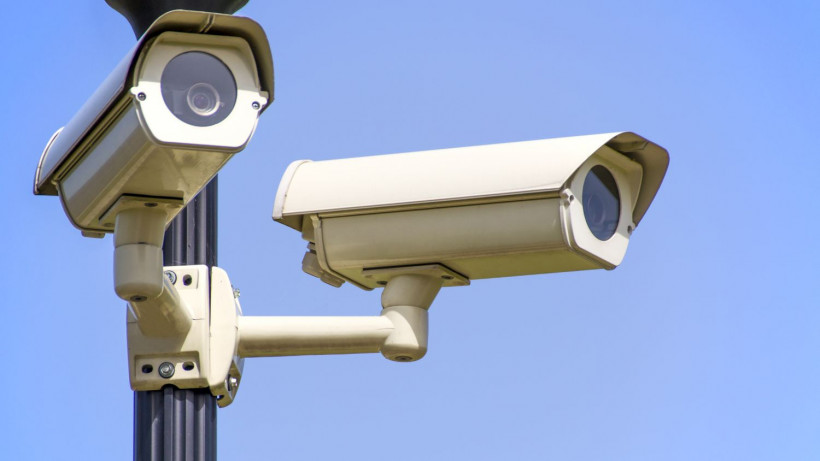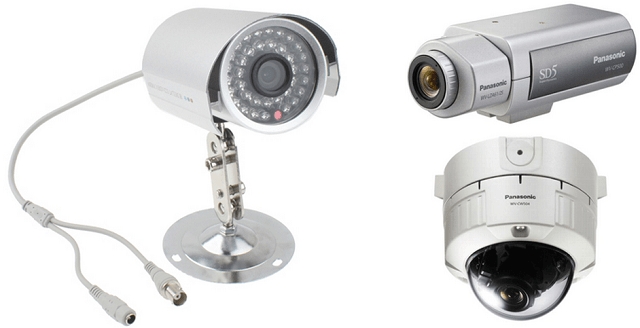Street lighting with motion sensor is a convenient option for home owners. Electricity is saved, since the light only burns in the presence of a person. The security function is also partially provided.
Types of motion sensors to turn on the light on the street

The motion sensor allows you to fix the movement of an object of a given size. The sensor transmits the registered signal to the connected device, and the control unit of the latter performs the programmed action.
The types of motion sensors for turning on the light are varied.
There are 2 options for the type of food:
- Networked - production power supply from a 220V network. This is a more convenient option, especially for sensors of internal systems.
- Rechargeable - equipped with 12V batteries. Usually these are wireless models that transmit a radio signal.
The device fixes the movement on the site in different ways. There are 4 categories:
- Ultrasonic - the device generates ultrasonic waves with a frequency of 20-60 kHz and records the reflected ones. If an object moves within the coverage area, the frequency changes. Pros of the sensor: independence from the weather, low price, safety. However, its radius of action is small and it works only at a high speed of movement. Ultrasound irritates dogs and cats, but disperses mice for the same reason.
- Infrared - records heat waves emitted by an object. There are 2 sensors measuring the temperature in different zones of the sector. Pros: the sensor does not respond to swaying branches, moving curtains, does not affect well-being. Cons: Direct sunlight, heated air from a heater or air conditioner causes false alarms.
- Microwave - the principle of operation is similar to that of an ultrasonic sensor. The sensor emits high frequency electromagnetic waves and records the reflected signal. Typically the frequency is 5.8 Hz. Plus: observation of several areas, the ability to "see" through thin brick and wooden partitions. Negative: the sensor is quite expensive, and high-frequency radiation is potentially dangerous.
- Combined - combines an infrared and a high-frequency sensor. Possesses positive properties of both types of sensors and compensates for their shortcomings.
For street lighting, ultrasonic or infrared sensors are more suitable, since they do not respond well to weather conditions.
Specifications

Which motion sensor for turning on the light is better to choose depends on its qualities and features of the lighting system.
Viewing angle
There are ceiling and wall models. The first has a 360-degree viewing angle. If mounted on a wall, its capabilities remain unused. In the wall version, the angle reaches 180 degrees. They are usually installed near the entrance.
Range of action
The radius is indicated in the passport - from 6 to 50 m. It is not worth enlarging the sector by placing the sensor higher than the manufacturer's recommendation. In this case, blind spots appear.
Power
This indicator is determined by the power of the connected lamps. The sensor power should exceed them by 20%. If a suitable sensor cannot be purchased, a starter or relay can be included in the circuit.
Additional functions
- Light sensor. The motion sensor in the lighting circuit works day and night. Since the lamps do not need to be turned on during the day, the system is equipped with a light sensor. In this case, the light is turned on only at night.
- Protection from animals. If the device is sensitive enough, it reacts to small objects - a dog, a cat. To avoid this, configure the protection option. However, if a dog with a large weight lives in the apartment, the sensor will turn on the light for it.
- Delayed shutdown. The sensor keeps on turning on as long as the object is moving continuously. It is not always convenient in the toilet or bathroom, on the porch of the cottage. The option provides a delayed shutdown.
Options increase the cost of the device. This must be taken into account.
Choosing a location

Select a location taking into account the type of sensor and installation method
- Ceiling mounted at a height of 2.5–3 m. The range of action is 10–20 m, which is usually sufficient.
- Wall mounted indoors or outdoors. Fixation height - 2–2.5 m. The radius of action is different.
Ultrasonic and microwave sensors are most effective when an object is moving towards them. Infrared works best if objects move across the observation area. This is taken into account when placing.
Adjustable installation
The choice of the connection scheme is determined by the nature of the rooms: with or without windows, with the need to turn on the light without a sensor, and so on.
- In a dark room without windows, the regulator is connected to a break in the phase wire that powers the lamp. The phase and neutral wires are connected to the input of the sensor, from its output the phase is pulled to the lamp, and the zero is connected to ground.
- For street lighting, a photo relay or switch is included in the circuit. Both devices are placed in a phase gap. The photo relay is placed in front of the motion sensor. It is activated when the light sensor detects the absence of daylight.
- If the light should not only turn on, but also illuminate the site for some time, a switch is mounted in parallel with the motion sensor. If the lighting is to be constant, flip the switch. As long as the switch is not turned off, the lighting is activated when the sensor is triggered.
- the body is equipped with movable hinges, which allows you to adjust its position;
- adjust the sensitivity - at the maximum value, the sensor is triggered when not only a person appears, but also on pets;
- illumination level - indicated by LUX;
- the turn-off delay time is adjusted with the TIME wheel - from 5 to 10 minutes;
- if the device has a photo relay, the illumination level at which the sensor should be triggered is also adjusted.
It is recommended to first set the minimum values, then increase as needed.
Rules for choosing a motion sensor to turn on lights on the street
How to select and configure a motion sensor to turn on the light on the street is described in the instructions for the device. Several parameters are taken into account:
- Sensing range - a model with a range of 4–6 m is sufficient to control a staircase or porch in front of the house. To turn on the lighting in the courtyard in front of the cottage, you need an option with a range of 20-25 m.
- Protection class is not less than IP54. If the region is rainy or the area is located on the seashore, where the humidity is higher, select a model with indicators of at least 65.
- For the outdoors, you need a solid case with a set of water and frost-resistant layers.
For outdoor lighting, only wall sensors with a 180 degree field of view are suitable.
They use devices in different areas: security lighting of a site, areas of enterprises, lighting of sidewalks, roads, alleys, decorative solutions in squares and parks.














